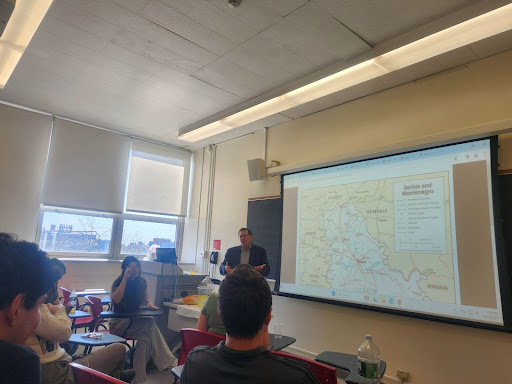The St. John’s Queens campus earned a silver rating in the new Sustainability Tracking Assessment and Rating System (STARS) this February.
The program was established by the Association for the Advancement of Sustainability in Higher Education (AASHE) and is self-reporting.
Colleges are rated based on the information they compile regarding education, research, operations, planning, administration, engagement and innovation in order to discover strengths as well as areas for improvement.
Rating levels follow a point system but are classified by the colors Bronze, Silver, Gold and Platinum. A platinum rating is the highest level a university can achieve.
Over 250 schools are currently registered with STARS. While there are none yet that claim the Platinum rating, eight have been rated Gold, including NYU, Duke and Oregon State University, according to information released on their Web site.
Sophomore Lily Topalian values the efforts that St. John’s is making to go green.
“I’m from the West Coast, where going green is really big, so it’s good to see that it is here too,” she said.
The results on the St. John’s scorecard indicate that the University is strongest in the category of Education and Research. Of 55 possible points the University earned 47.47.
According to Erin Chalmers, a senior at St. John’s and a sustainability coordinator in the Environmental and Energy
Conservation Department, this is most likely due to the emphasis that St. John’s has been placing on sustainability in social, environmental and economic areas.
According to the scorecard, St. John’s also received high marks for its diversity and its grounds keeping operations.
Freshman Urennaya Okoro said she makes an active effort to practice sustainability each day.
“I try to put all of the empty plastic bottles from my suite into the recycling bins every morning,” she said.
STARS ratings remain effective for three years, allowing time for schools to improve their ratings.
St. John’s plans to improve its score in the Building Energy Consumption category by implementing a new carbon neutrality plan initiated by Tom Goldsmith, director of the Environmental and Energy Conservation Department at St. John’s.
Chalmers also said that St. John’s has made further strides for improvement by using its STARS assessment to inform students about sustainability at the Staten Island campus’s freshman orientation.
“My freshman year, there was literally no small-scale recycling on campus,” Chalmers said.
Leaves on campus used to be placed in plastic bags and sent to landfills until last fall when Goldsmith and the Earth Club led a proposal that redirected dead leaves to be composted, which is a more environmentally friendly resolution.
While this year’s assessment was only based on the Queens campus, there is now a foundation for it to be moved to other campuses in coming years.















